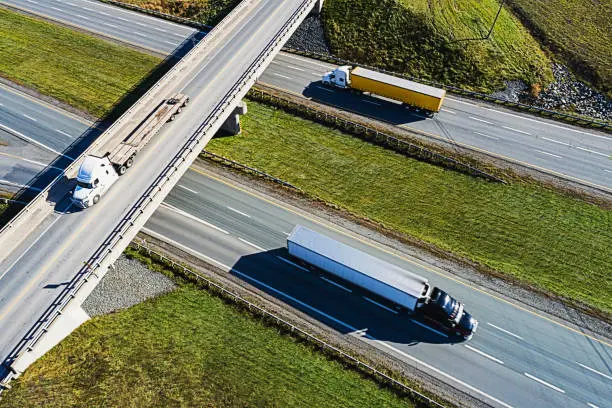
Road Transport: Driving Global Connectivity
- Admin
In the bustling landscape of transportation, road transport emerges as the lifeline of economies worldwide, seamlessly connecting communities, industries, and markets with its intricate network of highways, streets, and thoroughfares. From the delivery of goods to the mobility of people, road transport plays a pivotal role in facilitating economic growth, trade, and social mobility. In this article, we embark on a journey to explore the significance of road transport, its operational dynamics, challenges, and its indispensable role in shaping modern societies.
Significance of Road Transport:
Road transport serves as the backbone of transportation infrastructure, providing vital links for the movement of goods and people within and between regions. From trucks transporting goods to distribution centers to buses ferrying commuters to work, road transport supports a diverse range of activities essential for economic development and social cohesion. With its flexibility, accessibility, and door-to-door service, road transport serves as a lifeline for industries such as retail, manufacturing, agriculture, and tourism, enabling the efficient flow of goods and services across supply chains.
Operational Dynamics of Road Transport:
The operational dynamics of road transport encompass a variety of components:
Fleet Diversity: Road transport comprises a diverse fleet of vehicles, including trucks, vans, buses, and passenger cars, each tailored to specific transportation needs. Trucks range from light-duty delivery vans to heavy-duty tractor-trailers capable of hauling large volumes of cargo over long distances.
Logistics Management: Logistics management plays a critical role in optimizing road transport operations, involving route planning, vehicle scheduling, cargo loading, and delivery coordination. Freight companies and logistics providers utilize technology and data analytics to optimize delivery routes, reduce fuel consumption, and enhance delivery efficiency.
Infrastructure Maintenance: Infrastructure maintenance is essential to ensure the safety and reliability of road transport networks. Governments and transportation agencies invest in road maintenance, repair, and expansion projects to address congestion, improve safety, and enhance road quality for motorists and freight operators.
Regulatory Compliance: Road transport operations are subject to regulatory frameworks governing vehicle safety, driver qualifications, and transportation permits. Compliance with regulations such as hours-of-service limits, vehicle weight restrictions, and emission standards ensures the safety and efficiency of road transport operations.
Advantages of Road Transport:
Road transport offers several advantages compared to other modes of transportation:
Flexibility: Road transport provides flexibility in routing and scheduling, allowing for customized delivery solutions tailored to specific customer requirements.
Accessibility: Road transport reaches remote areas and urban centers alike, providing access to markets and communities that may be inaccessible by other transportation modes.
Door-to-Door Service: Road transport offers door-to-door service, enabling direct delivery of goods from the point of origin to the final destination without transshipment or handling at intermediate points.
Speed: Road transport offers faster transit times for short to medium-distance shipments compared to rail or maritime transport, making it ideal for time-sensitive goods and perishable items.
Challenges in Road Transport:
Despite its advantages, road transport faces several challenges:
Congestion: Traffic congestion on highways and urban roads can lead to delays, increased fuel consumption, and higher transportation costs for businesses and commuters.
Infrastructure Deficiencies: Inadequate road infrastructure, including poor road conditions, lack of maintenance, and insufficient capacity, can hinder the efficiency and safety of road transport operations.
Environmental Impact: Road transport contributes to environmental pollution and carbon emissions, primarily from fuel combustion and vehicle exhaust. Efforts to reduce emissions and mitigate environmental impact through vehicle electrification and alternative fuels are underway.
Safety Concerns: Road transport carries inherent safety risks, including accidents, collisions, and road hazards. Road safety initiatives, driver training programs, and vehicle safety standards aim to reduce the risk of accidents and improve road safety for motorists and pedestrians.
Conclusion:
Road transport serves as a vital artery of global connectivity, driving economic growth, trade, and social mobility across regions and nations. With its flexibility, accessibility, and door-to-door service, road transport plays an indispensable role in supporting industries, communities, and supply chains worldwide. As societies continue to evolve and demand for transportation grows, road transport will remain a cornerstone of modern transportation infrastructure, facilitating the movement of goods and people and driving progress and prosperity for generations to come.
